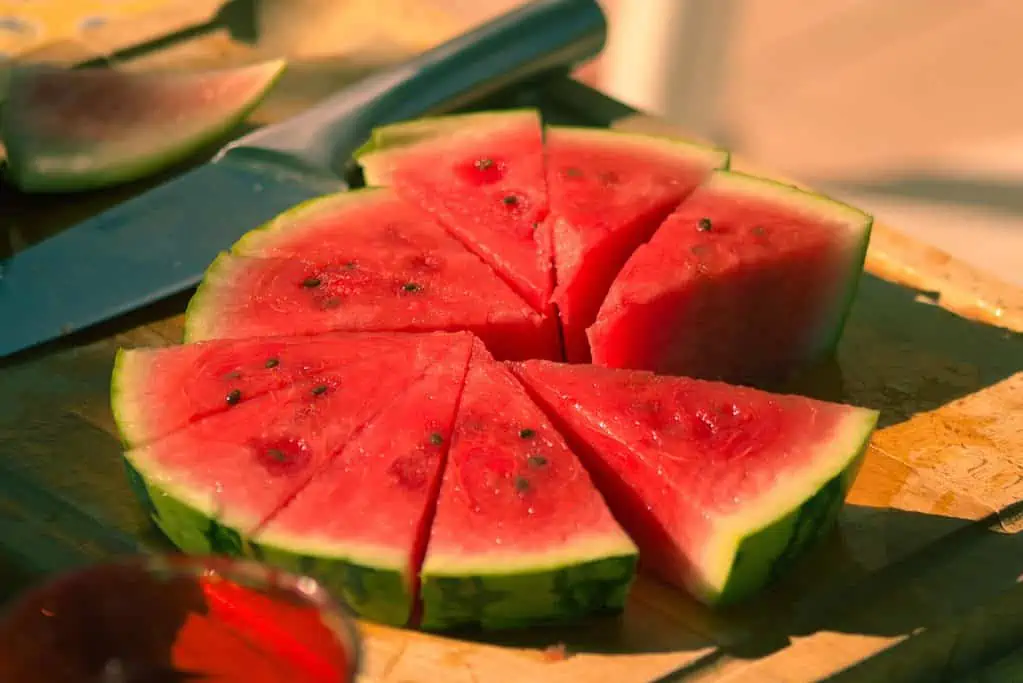
Mark Twain once said, “When one has tasted watermelons, one knows what angels eat.”
I would have to agree with him on that. Although I am not privy to the knowledge of what, exactly, celestial beings eat, I suspect that a delicious thick slice of watermelon would definitely be on their list. Watermelon is a perfect summer fruit that is as equally refreshing as it is sweet, and quite durable too.
I discovered just how durable a watermelon can be the other day while trying to unload groceries out of my car’s trunk. Channeling my inner Wonder Woman, I was attempting to grab all six bags of groceries and then scoop the watermelon under my arm, so I would not have to make a second trip. I failed. The melon stayed under my arm for about five seconds before sliding and smacking onto the driveway. And since I “never learn,” I power walked after it, groceries still in hand, and attempted to pick it up again, only for it to fall and smack onto the pavement again. Realizing that a second trip would be inevitable, I tossed the groceries onto the grass, in frustration, and picked up my melon, which was cracked and starting to leak. I was determined to save it. I took it inside, rinsed it off with some water and cut it open.
First thing I noticed was that it was perfectly ripe. Second, it did not seem too badly banged up. Because it had cracked and split open a little bit, I was not able to cut it into neat little triangles … but who really cares about that. It tasted lovely and I was glad I salvaged it. While I cut up the rest of the melon, I started thinking about where watermelons came from.
The origin of watermelons date back as far as 5,000 years ago, in the deserts of South Africa. This melon had the ability to grow in drought-ridden conditions and to store water within the fruit; hence the name watermelon. It was a great food source for some ancient African tribes to have as they ventured across deserts. However, the taste was much more on the bitter side. Around 2000 BCE, the watermelon also made appearances in the burial chambers of ancient Egyptian royalty. In some of the hieroglyphics written on the walls of the burial chambers, the watermelon is depicted. This is because it was sometimes stored in the burial chamber to provide nourishment in the afterlife. From Egypt, the watermelons began to be sold to merchants who were headed to Asia and Europe.
But it wasn’t until around the height of the Roman Empire that the first sweet-tasting watermelons were in circulation. After Rome, the melons made their way to other European countries, and then, in the early 1800s, were brought to new settlements in the Americas. Now there are over 1,200 varieties of watermelon, with China, as the largest producer, cultivating about 60 per cent of the world’s watermelons.
Regardless of its bitter-tasting origin, watermelon is a fun summer fruit that can be used in many things, such as in smoothies, popsicles, salads, cocktails and even in sandwiches. It is also a very healthy fruit. Watermelon contains citrulline, which helps move blood through your body and can help to lower blood pressure.
While other melons, such as honeydew and cantaloupe, are enjoyable, as well, they can’t quite compare to the perfectly balanced sweetness of the watermelon. Now, off to enjoy my slightly battered melon, which tastes as if it had never been battered at all.




